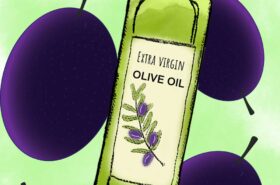Sunny day, ocean coast, salt in the air, the smell of summer, and mussels! They are essential to cuisines around the world and prepared in various dishes and styles. But do you know how they are farmed? If they are healthy or fresh, old or young, and many more? Here you’ll find out everything you should know about mussels in our ultimate mussel guide!
What are mussels?
Alright, everyone heard about mussels, that’s true, but do you really know what they are, except shellfish? Mussels are bivalve (a shell made out of two parts) shellfish with a specific elongated and asymmetrical shell. They are mainly saltwater but can be found also in freshwater habitats. As for their habitat, they are found in the area where the ocean meets the land between high and low tides (the intertidal zone). But some species of mussels can even be found on the deep ocean ridges. Let’s say mussels are very adaptable.
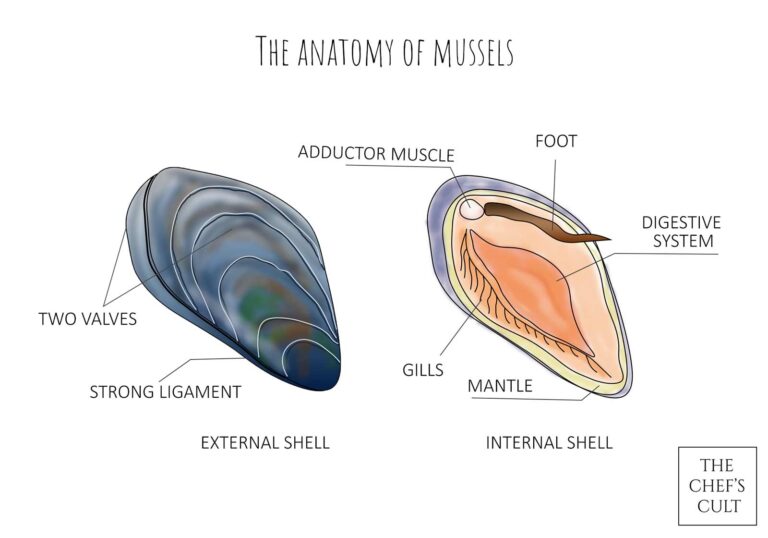
The anatomy of mussels
Every mussel is protected by its strong external shell. The external shell is made out of two valves joined together by a strong ligament, which is additionally stabilized by two strong muscles (yes, mussels are definitely hitting the gym!). Interesting fact is that even humans have these muscles called adductor muscles (they are placed in the “inner thighs” area in humans). Furthermore, mussels (but also other shellfish) have a foot.
The foot is an organ which helps with moving the mussel across the sand and sea, by pulling the mussel shell. The foot can even be used as an anchor, when things start to get serious. In the central part of the mussel, you can find the digestive system, gills and mantle. The mantle is the mussel’s soft outer layer which forms the shell. On top of that the mussel circulates the water through two syphons (inhalent and exhalent syphon).
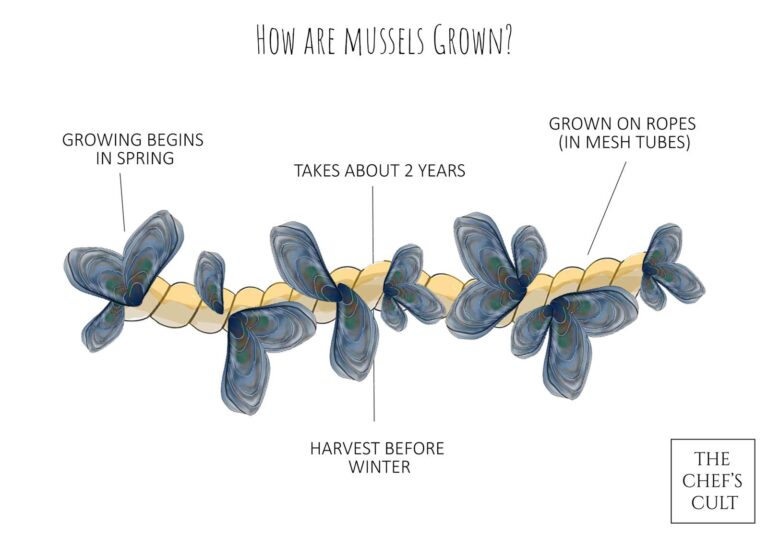
How are mussels grown?
Because mussels naturally stick to various surfaces easily, they are mostly grown on ropes. The growing cycle begins at late spring when mussels naturally begin with spawning. At first mussels are really tiny and in search for surfaces on which they can adhere. To catch the small mussel larvae growers put long collector lines in the seawater. They stay like that until fall, when they are being transferred to long mesh tubes called “socks”. Beforehand they are selected by size to grow more uniformly in the “socks”. The socks are then again placed back in the fresh seawater and marked. After two years they can be harvested!
How long does it take to grow mussels?
The minimum time to grow quality fresh seawater mussels takes about two years. But the time can vary depending on various growing conditions (temperature, water quality, food, etc.). The best time to harvest the mussels is before winter. At this time period the mussel is fully grown and ready to be consumed. On the other hand, mussels can live about 12 years, although in some cases the life span of some mussel species can be more than 100 years. That’s a lot! On top of that, you can guess the age of your mussel by yourself! If you look at the mussel shell, you can find black lines which represent one winter rest period. Now you only have to count the lines, and voila, you know the age of your mussel! Cool stuff!
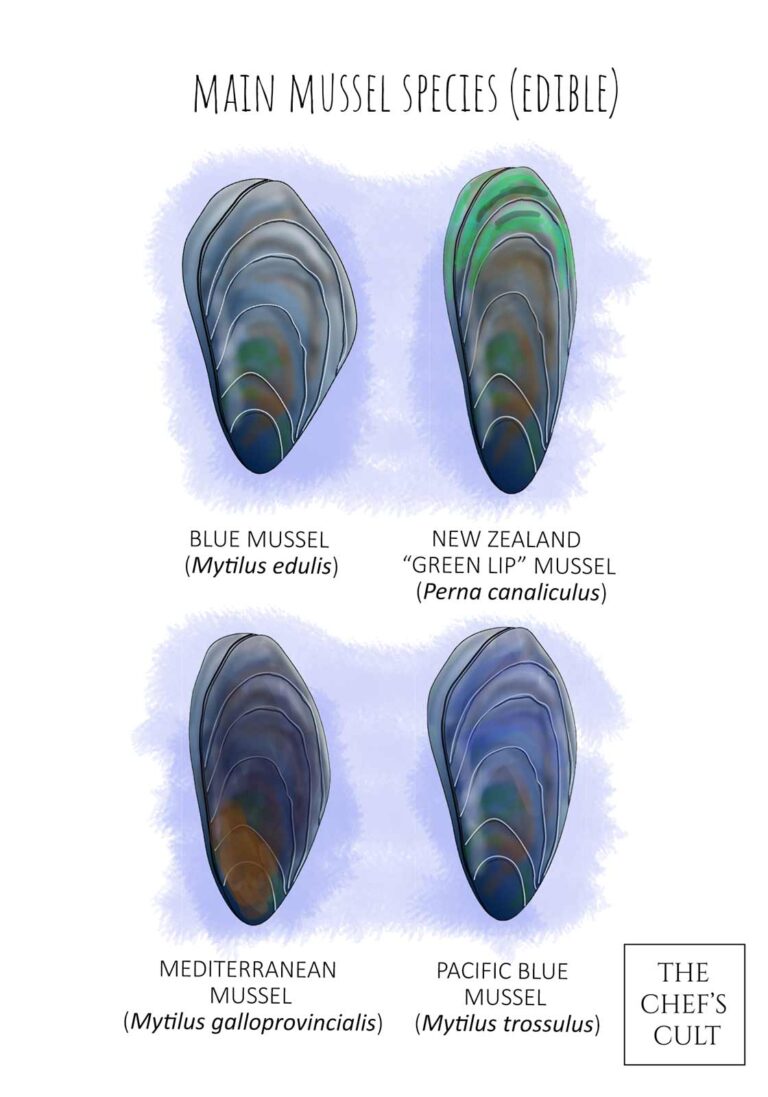
Main mussel species (edible)
Most store-bought mussels are cultivated by origin, and not from the wild. There is one mussel species which is dominant in its cultivation, the Blue mussel (Mytilus edulis). This species is abundant across the world, but of course there are others like the New Zealand green lip mussel (or Perna canaliculus specific for its green color on top of the shell, because, well, its New Zealand). Other mussels you can find on the markets are the Mediterranean mussel (Mytilus galloprovincialis) and the Pacific Blue mussels (Mytilus trossulus). If you bought your mussels in your nearby fish store, there is a high chance you got one of the species mentioned above.
There’s also one more tip for mussel lovers! You can even know their gender just by looking at their color! Female mussels are intense orange colored, and the male counterparts are more creamy and pale – with a light orange color! Even in the world of mussels, women are prettier!
How to clean mussels?
As we said, most store-bought mussels are cultivated, and therefore not as hard to clean as their “wild” counterparts. First you need to wash your mussels in detail under cold water. Remove anything that shouldn’t be there like sand, seaweed, mud or crushed shell parts. Many mussels have barnacles on top of their shell. To remove them use your pairing knife (or even tournee knife will do), and rinse again under cold water. Last but not least, we need to take the mussel by the “beard”! The beard of a mussel is made out of hair-like fibers that grow out of the mussel’s shell-crack. To remove the beard just grab it with your fingers and tug it toward the hinge of the mussel shell. That’s it! Your mussels are clean and ready to be cooked!
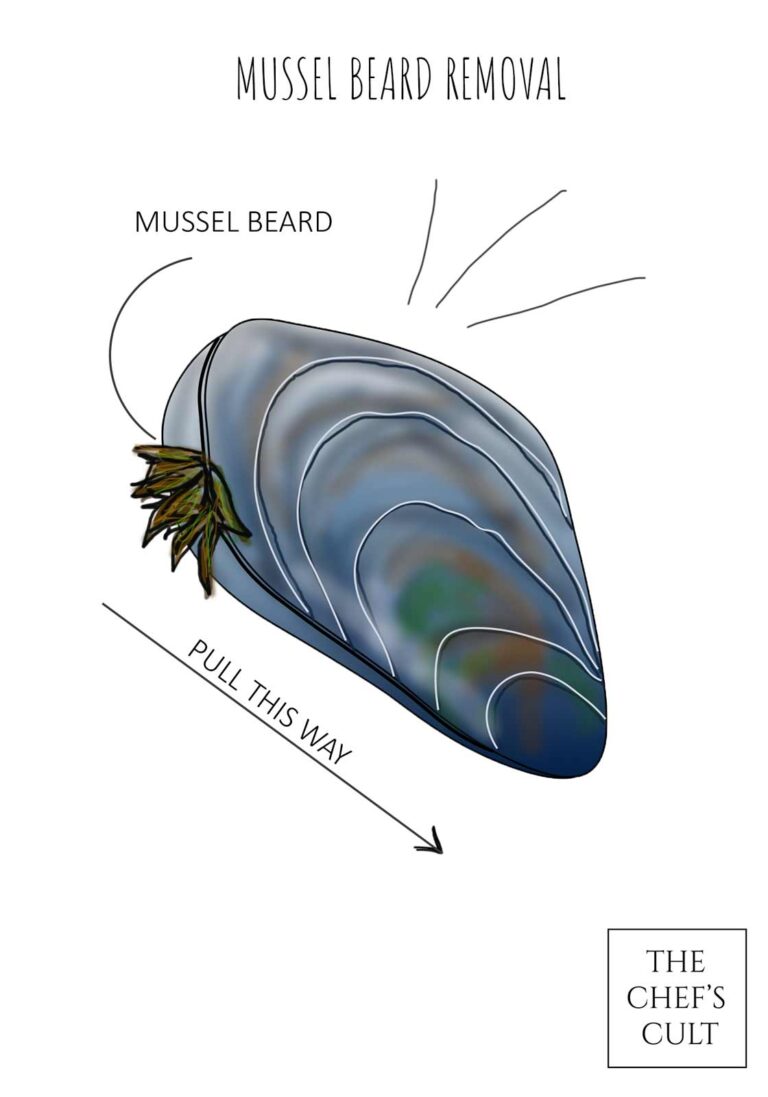
Are mussels safe to eat?
Edible mussel species are perfectly safe for consuming if properly stored and fresh. On the other hand, there are some risk factors regarding its consummation like paralytic shellfish poisoning. This can occur only if you consume shellfish (not only mussels), which are infected with a naturally occurring marine biotoxin which is produced by some species of microscopic algae, mostly during a red tide phenomenon (algal bloom). But you do not have to worry much, because most store-bought and cultivated mussels are protected from it!
How to know if your mussels are fresh?
Now we are asking the right questions! There are a few quick and simple guidelines to knowing fresh mussels. Firstly, fresh mussels do not have a foul and fishy smell. They smell like the ocean, a perfect, fresh and clean smell. If you tap them with your fingers they will close, showing you they’re still alive. Every mussel which is open (and stays open after being disturbed) should be discarded. There is also one cooking legend which says mussels which do not open after cooking are not safe to eat. That’s not really true, because some mussels just can’t open while cooking, but they are perfectly safe to eat (if you followed the previous instructions).
Are mussels poisonous?
Mussels can be poisonous if they come from an uncontrolled environment, but most farmed mussels are perfectly safe to consume (and they are healthy!). If you want to eat them raw, straight from the wild ocean, consider it again. Every wild mussel can have possible toxic agents such as bacteria (E.coli) or neurotoxins such as the previously mentioned saxitoxin (causing paralytic shellfish poisoning). PSP is a life-threatening condition and should be dealt with immediately! Some symptoms include numbness in the mouth area and face and neck area, followed by loss of control of arms and legs! We definitely want you to know that before you eat any wild mussels, especially raw!
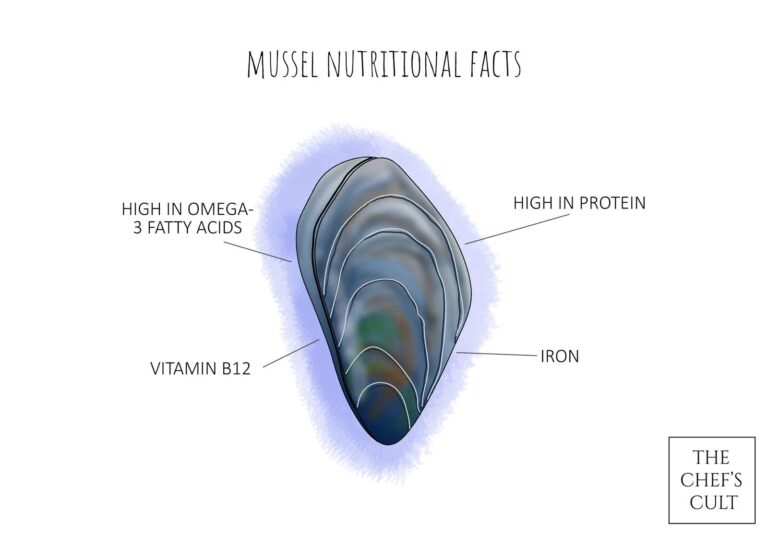
Are mussels healthy?
Mussels have some very good health benefits if consumed in moderate amounts. They are excellent sources of high-quality protein, which is easy to digest. You can call them protein bombs if you like! As you may know, fish is high in healthy omega-3 fatty acids, which are really good in keeping your heart and vessels healthy. On top of that they are very high in iron and vitamin B12, needed for the production of red blood cells. Let’s just say that mussels are generally considered very healthy food!
But mussels aren’t only healthy for you, they are also healthy for the environment. They have a very important role in sustaining various ecosystems. They are great in removing toxins from oceans and filtering algae and bacteria from the water, keeping the ocean (and water) clean and healthy! Without them the oceans and rivers definitely wouldn’t be the same!
Culinary uses
Mussels are used across the world for various traditional dishes. They are a fundamental part of Mediterranean cuisine, where they are consumed almost on a weekly basis. Mussels are also very important to the French and Belgian cuisine where they are served in various ways. Some of the most important traditional dishes in the world include mussels like paella (Spain), moules frites (Belgium), Mydia (Greece), dagnje na buzaru (Croatia), moules a la mariniere (France), and many many more!
How to store mussels?
After you bought your fresh mussels, you need to store them right! Because fresh mussels are still alive, you need to keep them that way! The best way is storing them in the coldest part of your fridge in the original net you bought them. You should wrap them in a damp towel (to keep their microclimate wet and moist). Do not seal them up in a plastic bag or container, because they need air to breathe! This way your mussels should be safe for 24 hours, but always remember, good mussels are fresh mussels! That’s why you should prepare them straight away!
That’s it for today! Now you can call yourself mussel expert because you know stuff others simply – don’t! You see beauty others aren’t aware of! It’s the little things in life that matter! Keep that in mind! Your Chef’s Cult!
